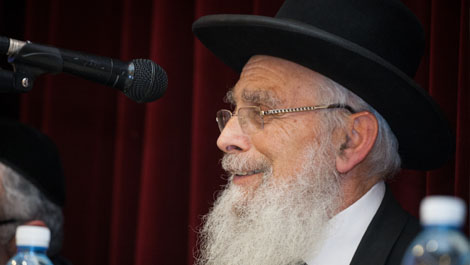Beit Midrash
- Sections
- Chemdat Yamim
- P'ninat Mishpat
Reuven gave a house to Shimon as collateral for a loan before going abroad. When Reuven returned and wanted to pay his loan and claim back his house, he found that the partitions between his part of the property and his partner’s property were missing. Shimon said that he received the property without partitions and that if there were partitions, he didn’t want them because he was afraid the non-Jewish inhabitants would destroy them. He added that if there were partitions, it was Shimon’s father who had installed them.
The various contradictory claims that Shimon presented regarding the existence of partitions or lack thereof prove that one cannot take any of them seriously. His main claim is that he did not receive the partitions, which he supports by the fact that the document that stipulates the details of the collateral arrangement do not mention them. However, since partitions that are part of a property are considered part and parcel of the property, they are included unless the document explicitly states that they are excluded (witnesses to an oral stipulation would not suffice).
It is also not clear why the presence of non-Jews in the property is relevant to Shimon’s refusal to accept the partitions because even if the non-Jews would cause damage to the property, Shimon would not bear responsibility for them, if indeed it was Reuven who brought them in as tenants. Rather Shimon would just have to return the materials of the now broken partition to Reuven. If, though, it was Shimon who brought the non-Jewish tenants to live in the house, then he is responsible for the damage they caused, as he should have known they would be dangerous [Ed. Note- presumably, in those times, it was not feasible for a Jew to sue a non-Jew for damage he caused.] Certainly, if Shimon is the one who took down the partition, he is obligated to rebuild it.

P'ninat Mishpat (802)
Various Rabbis
282 - Responsibility for Collateral
283 - The Right to Rent in 16th Century Turkey
284 - A Donation That “Destroys” a Shul
Load More

P'ninat Mishpat: Rental of an Apartment that Was Not Quite Ready – part II
based on ruling 82031 of the Eretz Hemdah-Gazit Rabbinical Courts
Beit Din Eretz Hemda - Gazit | Iyar 5784

P'ninat Mishpat: Return of Down Payment Due to War – part I
based on ruling 84044 of the Eretz Hemdah-Gazit Rabbinical Courts
Beit Din Eretz Hemda - Gazit | Elul 5785

P'ninat Mishpat: Benefit from Unsolicited Efforts of the Plaintiff
based on appeal of ruling 82138 of the Eretz Hemdah-Gazit Rabbinical Courts
Beit Din Eretz Hemda - Gazit | Av 5785

P'ninat Mishpat:Amounts and Conditions of Payment to an Architect – part I
based on ruling 83061 of the Eretz Hemdah-Gazit Rabbinical Courts
Beit Din Eretz Hemda - Gazit | Iyar 5784

Various Rabbis
Various Rabbis including those of of Yeshivat Bet El, such as Rabbi Chaim Katz, Rabbi Binyamin Bamberger and Rabbi Yitzchak Greenblat and others.

Moreshet Shaul: A Crown and its Scepter – part II
Based on Siach Shaul, Pirkei Machshava V’Hadracha p. 294-5
Av 5785

Connection to the Present and the Past
Iyar 21 5775

Following the Majority When the Minority Is More Knowledgeable
5771


























